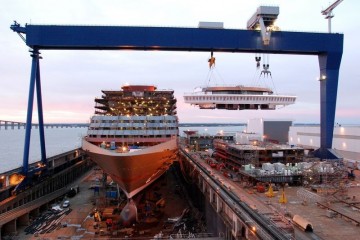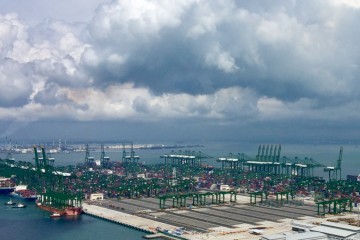It is fairly obvious that ships are not ports. Yet both are suffering from severe overcapacity. How did that happen and what is the cure?
First, the shipping and the ports sector overestimated demand. Not surprising as they hire the same consultants to make the case for more ships and port extensions (consultants that have an interest in this happening, but that is a problem that we will leave for another post). What is more surprising is their insistence in going ahead with adding capacity when it was clear to the rest of the world that the global economy was in crisis. The mega containerships were built after the start of the financial crisis. The mega port expansions in Northern Europe – just to pick one area – took also place after the 2008 financial and economic crisis: Rotterdam’s Maasvlakte 2, JadeWeser Port, London Gateway, amongst others.
Second, both the shipping and ports sector ignored that competitors were investing, creating a powerful prisoner’s dilemma. What might have made sense for an individual player, certainly was not sensible if done by all players. A more cynical mind would call it a pre-meditated strike.
It is one thing to build up a strategic capacity reserve: so, to be ready for good times, considering that you will be too late to fully benefit if you start building in good times. But the more wicked strategic game is to create overcapacity to push competitors out of the market. Where shipping has the Triple Es, the ports sector has Maasvlakte 2: both were ahead of the curve, both created a fatal dose of overcapacity that hurts competitors.
A third reason is subsidies and easy money. This is most obvious for ports that get loans, guarantees and even outright subsidies to expand and be connected to hinterlands. But also shipping gets its share of taxpayers money, in the form of favourable tax treatments, exemptions from social security payments and other support. In some countries, public money was used to build up generous ship finance schemes, that directly created a ship bubble.
The result is capital destruction. Ships are not used, ports are not used, so goodbye to healthy return on investment. The opportunity costs related to the port bubble are possibly bigger than for ships, as they do not only relate to port infrastructure assets, but also to space, one of the scarcest goods in cities – still the places where most ports are located. Ships are layed up – so put aside for the time being – or scrapped. The port equivalent to laying up is empty terminals; and its version of scrapping is waterfront development. Whatever the form, whatever the specifics, we get what was sowed: death from overcapacity.
3 Comments
Comments are closed.




Hello Olaf.. Now that the infrastructure has been created, what is the way out of this..?? Global economy cannot be fixed quickly in the short term.. So now..??
[…] is a port bubble, at least in the container sector – and one explanation of this excess supply is that ports […]
[…] shipping come già accaduto in Europa dopo il 2008 “finisce per distruggere capitali” (si veda https://shippingtoday.eu/shipping-port-bubble/ ) anche, e soprattutto, quando il capitale pubblico supporta, sempre secondo Shipping Today, il […]